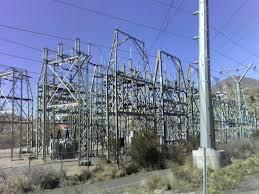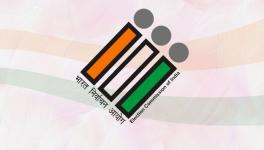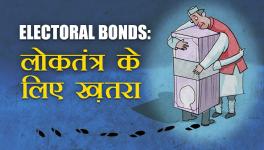The Bankruptcy of Power Sector Reforms
The CAG Draft Report on Delhi's Distcoms describing the Rs. 8,000 crore loot of consumers, follows on the heels of the Orissa Electricity Regulatory Commission's (OERC) order, cancelling the licenses of the three Anil Ambani Reliance distribution companies. OERC cancelled Reliance licenses in March, 2015 for failing to deliver on any count, and repeatedly violating its orders. With this, we have come a full circle on the electricity reforms introduced by the Electricity Act 2003, whose primary goal was to privatise the sector. The two examples of privatising distribution have now both failed – Orissa and Delhi. All that remains is formal winding up these private distribution companies and handing them back to public hands, as Orissa has already done.
The World Bank had started the campaign for privatising electricity generation and distribution in the 90's, as a part of its larger agenda of privatisation of public infrastructure. The “star” example that the World Bank gave, was that of Margaret Thatcher, in UK, who wanted to break the unions and privatise all public services such as telecom, electricity and railways. What the World Bank did not talk about publicly, was that Maggi Thatcher's “reforms” were not the first electricity “reforms”. That “distinction” belongs to the infamous Pinochet regime, which carried out these reforms after Pinochet's bloody coup in Chile, completely privatising the electricity sector.

Image Courtesy: en.wikipedia.org
The key problem of privatising electricity sector is that it is not only an essential sector, it is also a monopoly. Monopolies encourage price gouging and super profits. People are very reluctant to hand over such monopolies to private hands, whose only motive would be to milk the consumer for as much as they can get. So the problem for the World Bank and its ideologues was how to argue that this would not happen in the electricity sector?
The World Bank and their ideologues gave two answers. One is that it is possible to separate generation, transmission and distribution of electricity – the breaking up of what were, till then, universally regarded as integrated utilities. The second was to believe that markets could be created through the action of electricity regulators and therefore monopolies contained.
Here is where the so-called reforms descend into theology. In their view, the state delivering infrastructure services is inherently inefficient. All we need to do is bring in the private sector and introduce competition via regulator, and the “gods” of the market will ensure that all will be well. As we now have seen, all is indeed well, but only for those who were “gifted” various parts of the electricity sector.
The first attempts to bring in private sector in the power sector was under the Congress in the 90's. The Narasimbha Rao government, in which Manmohan Singh was the Finance Minister, introduced a policy in which private generation was invited in with various incentives. These varied from providing cheap coal to guaranteed off-take and escalating purchase prices. The Enron Dabhol fiasco was a consequence of this disastrous policy. The Power Purchase Agreement with Enron was such that it would have bankrupted not only Maharashtra State Electricity Board but also the state of Maharashtra. Fortunately for Maharashtra, Enron collapsed in the US, after it was exposed that they were running a giant Ponzi scheme through a number of shell companies, and fixing the prices in the electricity market.
Enron not only killed the initial private power projects that were all based on Enron economics, but also the emerging electricity trading in the US, which had taken California as its testing ground.
It is not that we learned anything from the double Enron fiascos – the one in Maharashtra and the other in California. The World Bank ideologues, who by then had taken over the top policy positions in India, first in the Narasimbha Rao government, later in the Vajpayee government, continued with their goals of dismantling the state owned electricity sector, claiming it was inefficient and proving a big drain on the government finances. The Electricity Act, that virtually mandated trifurcation of the State Electricity Boards (SEB's) into a number of companies – for generation, transmission, and distribution – was pushed by the NDA government with complete support of the Congress. Only the Left opposed it in Parliament in 2003.
The 90's also saw the Indian power sector being denied funds in a big way. The centre cut back on its support to to the states in adding to their generation. India, who was then adding about 40% per each Five-year plan, lowered to less than 20% in the 8th, 9th and 10th Five Year plans. The budgetary allocation, dropped steeply, and the bulk of the investments being met by the borrowings of the Public Sector Undertakings. The cost of electricity went up quite steeply as did the deficit of the SEB's.
The Electricity Act made it possible for private companies to set up generating stations and supply electricity to the distribution companies. The UPA government, which took over from the NDA, also gave other incentives. Manmohan Singh, who himself headed the coal ministry, gave these private generators coal mines at throw away prices, on the promise that they would supply cheap power. As we discovered later through the CAG Report (Coalgate) , these companies did exactly what the companies securing 2G spectrum did; they either sold their licenses at whopping prices, or sold the coal in the market making huge profits.
The second set of incentives was providing cheap finances – priority sector lending of the nationalised banks was made available to these private players under the then Finance Minister, PC Chidambaram. As we saw in the Enron case, private capital brings in only fictitious capital. It takes loans, “overpays” to equipment vendors or turn-key contractors, and recycles this money through some fancy book-keeping, as their share of capital. What comes in as so-called private investments, is only the recycled funds taken as loans from the public sector banks. Therefore, the private players are not bothered about the crisis of their companies. They have taken their money out of the companies anyway. The ones who will be left holding the bag are the big public sector banks.
Today, the private companies owe banks big time. Indian Express reported in 2012 (Oct 25 2012), “As per Credit Suisse estimates, 36 thermal power projects involving a debt of Rs 209,000 crore of private players are now facing potential stress”. Potential stress is Credi Suisse's way of saying potential bad debts or in the banking sector's euphemism – non performing assets. This figure has only grown by 2015.
Who are these companies? They are the same as the “captains' of the industry that Modi met recently to make India a global player. They are the Ambanis, the Tatas, the Adanis, and so on. These are the same players who benefited from the coalgate under Manmohan Singh, and are now the favoured ones for Modi. Indian Express identifies them here, “The projects facing potential stress include Adani (4 projects with a debt of Rs 24,100 crore), Lanco (five projects with a debt of Rs 22,100 crore), Reliance ADAG (three projects involving a debt of Rs 32,600 crore), Tata Power (one project with a loan of 14,400 crore), IndiaBulls (four projects with a debt of Rs 21,200 crore) and Essar (seven projects with Rs 21,900 crore debt)”. To this list, we must add today, Sesa Sterlite (or Vedanta) and Jindals, GMR, and Hindujas, who have also borrowed heavily from the banks.
The distribution sector reforms were held to be the much more difficult ones than inducting private sector in generation. The reasons are obvious. They are spread over a much larger area, they have to deal directly with the consumers, and have to distribute electricity to rural areas. The reason for choosing Orissa and Delhi for distribution reforms were that both had low agricultural loads. Delhi has very little agriculture, and Orissa had done poorly in extending electricity to rural areas.
The Orissa distribution reforms came a cropper soon after the Orissa cyclone in 1991, when AES, the US multinational, walked out of its commitments to restore power to cyclone-hit areas. It had successfully bid for one of the four distribution companies that had been spun out of the Orissa State Electricity Board. The other three, which had been taken over by Anil Ambani Reliance, continued for another 15 years -- till 2015 – before OERC lost its patience. It is now understood that Anil Ambani Reliance is now quitting the distribution business, if not the power sector all together.
All this brings out to the central question, have we now reached the end of the privatisation road? Not if the Modi government has its way. Piyush Goyal is now advocating the magic bullet of the ills of the electricity sector lies in something called “open access”. This open access is allowing any consumer, anywhere to buy electricity from any generator. Of course this so-called open access is a myth. Electricity does not observe the laws of the market, it flows based on the laws of physics. There is no Flipkart to deliver electricity from Tatas to your house. Open Access introduces costly metres, which will know when you have consumed electricity and tally it with your so-called purchases. All this will be a giant accounting system, which will allocate entirely through such accounting, who has supplied electricity to you and how you must settle such accounts. This system will account all the steps – how much power you consumed, how much the distribution company that brings the electricity through its wires supplied, how the transmission company that has supposedly picked up this electricity from some generator supplied to the distribution company and then the generator from whom you have supposedly purchased such power. Every such supply must be tallied with the electricity transfers in each step of the way, and the account settled every month when you pay the bill. As experts have noted, this is adding a huge accounting and metering overhead to the electricity sector for no visible benefit.
Does this open access work anywhere? In a few countries that have tried it, it helps only large consumers, who are able to buy cheaper electricity. As the sum of electricity supplied remains the same, if the big consumers gain, who loses? Obviously, the small consumers. So this is another way of tilting the balance against the bulk of the people and in favour of capital; the age old policy of subsidise the rich and sock the poor.
It is not an accident that the cost of electricity has risen from Rs 1.37 per unit in 2002 to Rs 5.87 per unit in 2013. The reforms were ushered in with the promise of cheap and plentiful power. Instead, it has impoverished the people, enriched Indian capital and put the banks at risk. Instead of introducing new follies such as open access, we now need to go back to the drawing board and rework our electricity sector. What we need are solutions and not meaningless slogans.
Disclaimer: The views expressed here are the author's personal views, and do not necessarily represent the views of Newsclick
Get the latest reports & analysis with people's perspective on Protests, movements & deep analytical videos, discussions of the current affairs in your Telegram app. Subscribe to NewsClick's Telegram channel & get Real-Time updates on stories, as they get published on our website.
























